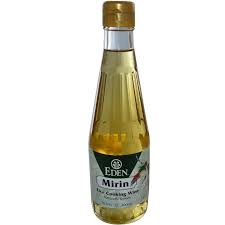
I was first introduced to mirin in my “Whole Foods Production” cooking class during graduate school and it has been a staple in my pantry ever since. I don’t do much cooking with drinking varieties of wine (reds and white) for two reasons: one I don’t love the flavor drinking wines add to dishes, and two I most often don’t have bottles open when I need it. So mirin is a go-to substitute when wine is called for in cooking.
Mirin is a staple in Japanese cooking and is much like rice wine but with higher sugar content. Its subtle sweetness just pairs beautifully with other Asian flavors to make incredible sauces.
And that’s why, nutritionally, I want you to have it in your pantry…
Mirin glazes give so much flavor to leafy and tender veggies without a lot of added sugar and fat.
Once you get comfortable with making these easy home-made glazes you’ll start needing less and less bottled sauces that are often full of ingredients we don’t want.
Basic formula for glazes (add to vegetables after cooking; will continue to thicken as it cools):
- 1/4 cup broth
- 3 tablespoons reduced-sodium soy sauce
- 2-3 tablespoons mirin
- 1-2 teaspoons red pepper flakes
- 2 tablespoons kuzu root dissolved in 2 tablespoon water
The magic happens between the mirin and kuzu root starch. The mirin adds the flavor and the kuzu holds that flavor tightly against the veggies (vs a stir-fry where all the flavor pools at the bottom of your bowl).
Mirin is getting easier to find in Asian sections now (also easy to get online).
But if you just don’t have mirin when you need it, here is a quick substitution:
- Dissolve a small amount of sugar in a little white wine, dry sherry, or rice wine vinegar: about 1/4 teaspoon of sugar per 1/4 cup wine.
Experiences you’ve had with mirin? I’d love to hear your ideas!
Warmly,


